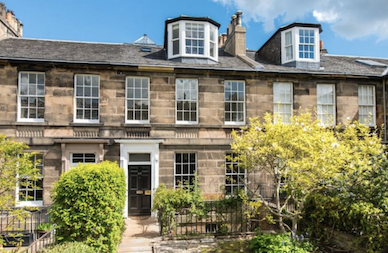Scotland’s prime home market priced above £500,000, which is less reliant on borrowing, showed a resilient 1% increase in net agreed sales in 2023, compared to a 17% drop in UK regional markets outside London, according to Savills.
For houses between £750,000 and £1 million, agreed sales were 7% higher in 2023 compared to 2022, but the discretionary market above £1 million saw -7% lower activity, Savills said.
The £500,000 to £750,000 price band, which is more exposed to mortgage lending, witnessed a 2% rise in agreed sales.
Net agreed sales from £300,000 to £500,000 increased 6% in 2023.
“Mortgage affordability dictated the pace of transactions across Scotland’s housing market last year,” said Savills.
“A spike in lending rates following the September 2022 mini budget impacted the mortgage dependent mainstream market up to £300,000.
“There were -4% fewer second hand net agreed sales here during 2023 compared to 2022, according to data provider TwentyCi …
“Behind the scenes, it has been a price sensitive market with transactional activity facilitated by an 84% rise in properties undergoing an asking price change last year.
“Looking forward, with a wider range of available properties in some areas and more stock expected to launch during the first quarter of 2024, pressure on pricing will continue.
“Following a turbulent year, prime regional house prices outside London fell marginally by -0.8% in the three months to December 2023, an improvement on the -1.5% drop seen in both Q2 and Q3 2023, according to the Savills prime index. This leaves prices down -4.8% year on year.
“Scotland was later to respond to downward pressure and was the only prime market to experience a further acceleration in price falls in Q4 2023 (-0.5% vs -0.1% in Q3). However, values are down just -0.8% annually and are 15.5% higher than in March 2020, making it the strongest performing prime region in the UK.
“The trends witnessed in Scottish transactional performance across various prime price bands correspond with value growth.
“Prices for properties in the discretionary markets above £1 million fell by -0.9% annually, with a -1.9% fall for those above £2 million.
“Meanwhile, the market from £750,000 to £1 million, which has outperformed in terms of transactions, has seen prices remain steady over the last 12 months.
“Prices between £500,000 and £750,000 fell by -0.7% as there is more exposure to affordability pressures here.
“The headline figures of a marginal -0.5% quarterly drop and -0.8% annual drop in prime Scottish prices during Q4 2023 mask local differences.
“Prime prices in the market hub of Edinburgh City fell by -2.3% in the three months to December 2023, leaving them -4.9% lower than a year ago, against a backdrop of increased stock availability, which has reduced competition amongst buyers.
“The market for both flats and top end properties in the capital is challenging, although family houses continue to outperform.
“Outside Edinburgh, prime prices were unchanged, however there was a slight uplift in St Andrews, Gleneagles, Dunblane and Gullane.
“Glasgow City prime prices saw little movement in the three months to December 2023.
“However, townhouses in the west end continued to attract premiums with ongoing constrained supply.
“But like Edinburgh, mid market mortgage dependent flats are a much tougher sell. Prime prices outside Glasgow have also been steady, with demand for properties in commutable country locations such as Ayrshire and Stirlingshire and also waterfront properties in Argyll.
“Prime Perthshire prices fell slightly by -0.4% in the three months to December 2023, with many buyers reluctant to pay premiums, especially for large traditional houses that are costly to run or that require modernisation.
“Despite a softening in prices, prime Perthshire values are 0.3% higher than a year ago, with high demand and limited availability helping keep prices relatively firm.
“Across Angus and Southern Kincardineshire, prime prices were level in the final quarter although there has been a slight uplift in prices in Dundee and Broughty Ferry.
“In the Aberdeen area, the number of prime transactions above £500,000 was unchanged between 2022 and 2023.
“Although mainstream values continue to correct, price adjustments in Aberdeen’s prime market have been less severe due to stock levels staying flat amid excess availability in lower value markets.”
